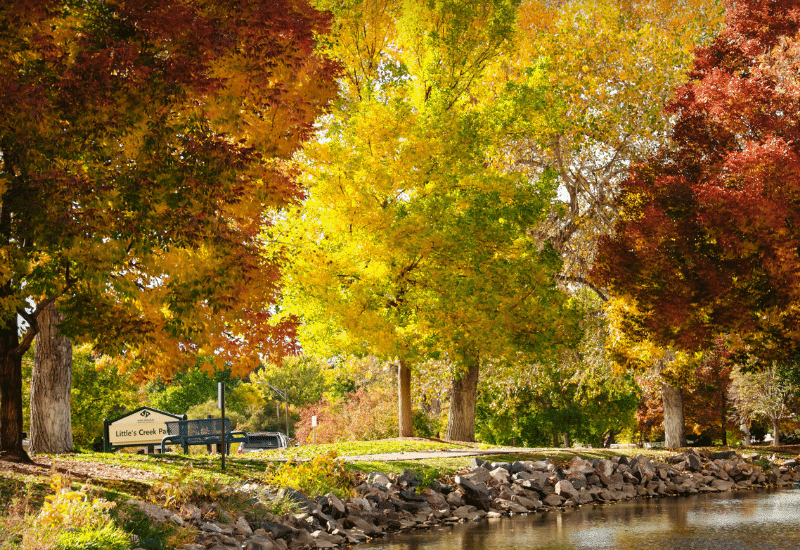
Ash trees are classified as members of the genus Fraxinus within the olive plant family, Oleaceae—a group that includes 54 to 65 medium to large flowering tree or shrub species.
Coming from temperate regions of North America, Europe and Asia, most Ashes are deciduous, but few subtropical varieties are evergreen.
You will recognize ash trees by their distinctive long pinnate leaves, divided into an odd number of leaflets, their smooth straight trunk, opposite branches and very unusual winged seeds which are called ‘keys’.
They will also bloom profusely in spring, with white, cream or even purple inflorescences called “racemes.”
Come in various sizes and shapes these long-lived shade trees are elegant and ideal for specimen planting and urban parks.
This identification guide will cover common types of ash trees to consider for your landscape and distinguish the best varieties of ashes worldwide!
Learn How to Identify Ash Trees

Don’t get me wrong; ash trees are similar, but each is different. So how can you know which ash tree do you have?
Ash trees have very neat, very defined characteristics; they are easy to identify. We just need to look at its parts in some detail.
Identify Ash Trees by Their Trunk and Bark
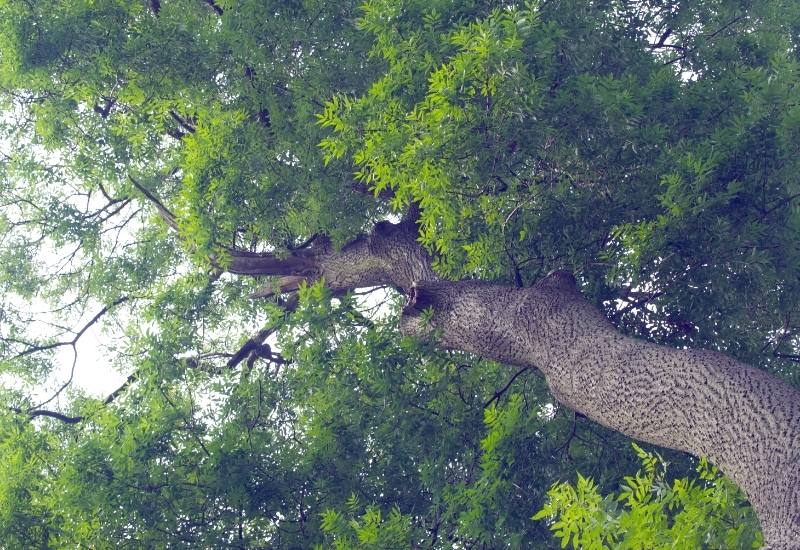
The trunk of ash trees is straight; this makes them very elegant and ideal for neat gardens and parks.
It grows to roughly 1/3 of the tree’s total height before branching, which in adult individuals means over 6 feet (1.8 meters) on average.
The bark of an ash tree can be smooth (especially with young trees), or cracked, but with a very distinctive pattern; you will see vertical grooves that form interesting shapes, often diamonds, waving or giving you the impression of rivers dug by water over a long time.
Most ash trees have gray bark, but some have yellow to brown shades too.
And if you cut the trunk… The wood is gray or light brown, and quite good quality, hard and with lovely, smooth striped patterns on it.
Identify As Trees from Their Branches

Ash trees have very elegant and unusual branches! They are opposite, which is very rare in trees.
This means that two branches start off at the same height in opposite directions, and they usually grow upwards from there.
This should make it easy to recognize a tree of this genus in winter, when it has no leaves on. Talking about which…
Identify Ash Trees from Their Foliage
The leaves of ash trees are very distinctive too; they are pinnate. This means that you will see a central petiole with elliptical and pointed leaflets opposite on each side, and one at the end.
The number of leaflets varies from ash species to species, from 3 to 13, most varieties have from 7 to 11.
They are very elegant and frond like, often arching, and giving beautiful light patterns.
Identify Ash Trees from Their Flowers
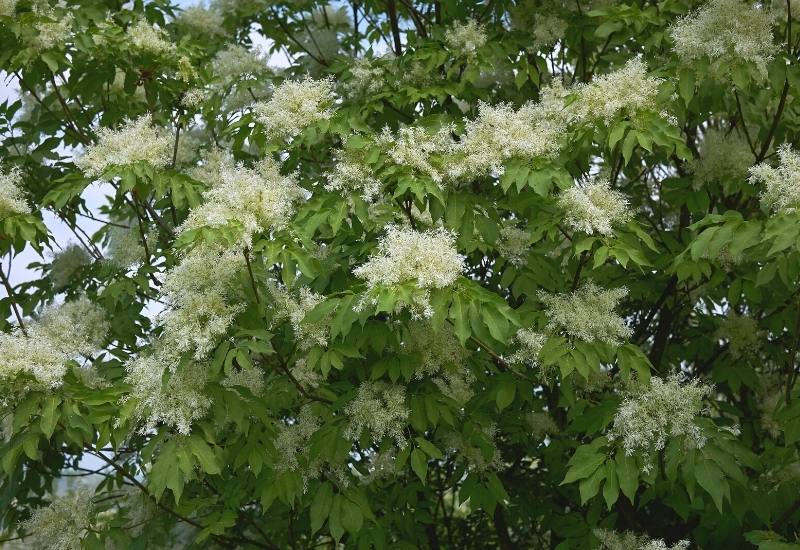
When ash trees blossom, you will see large clusters of little flowers at the end of branches.
The individual flowers are small, often tiny, and usually white (but other colors like cream, yellow and even purple exist). The smaller flowers look like fluffs of cotton.
The inflorescences are thyrses in shape… Ok, technical word… it means that they have many stems that give way to other stems, a bit like the branches of trees. They are complex clusters, with different “arms”…
This too makes it easy to identify them… As does what follows.
Identify Ash Trees from Their Seeds
The seeds of ash trees are original, playful and easy to identify… They have wings! Yes, like those of maple trees, but with a difference.
Called “keys, or properly “samaras”, ash tree seeds are individually attached to the stem with a petiole, while in maples they come in attached pairs.
They start off as light green in light drooping clusters and ripen to different shades of brown as they dry up, ready to pick up the wind and fall far from the tree in fall.
Identify Ash Trees by Their Size
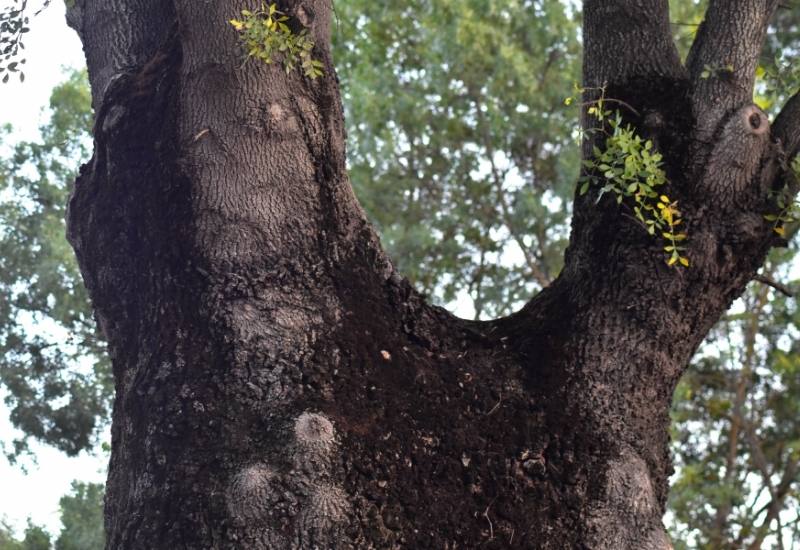
Ashes are medium sized trees. They will never tower over tall buildings like redwood, plane trees etc..
The usually reach about 40 to 70 feet when mature (12 to 21 meters), though the tallest can touch the 80 feet mark (24 meters). And exceptionally they can become larger than this .
It tales between 16 and 60 years for an ash tree to reach full size; they are fairly slow growers.
Elegant, intriguing and easy to identify, now you know when you can call a tree “ash.” So, shall we look at different types of ash trees now?
12 Iconic Types Of Ash Trees
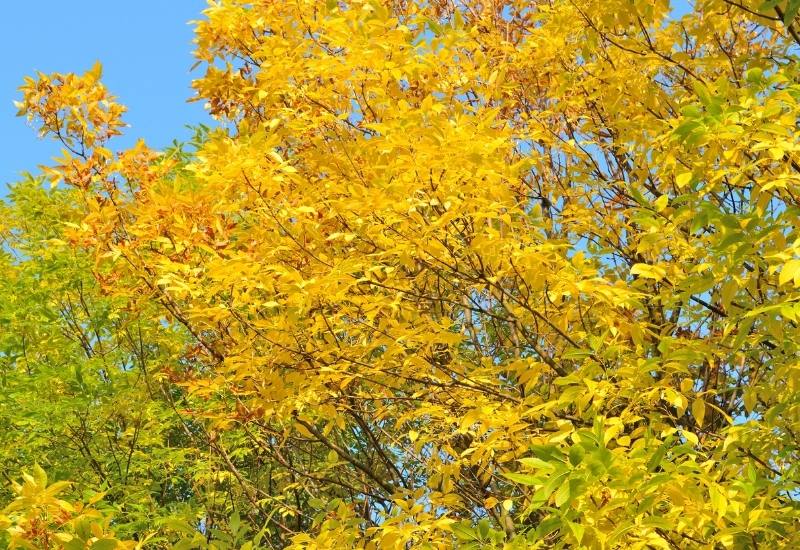
While ash trees shows excellent adaptation to diverse habitats, some varieties of ash trees are better suited to the home landscape than others.
Here are the 12 most beautiful ash tree types that are the most commonly planted in home landscapes.
1: Green Ash (Fraxinus pennsylvanica)
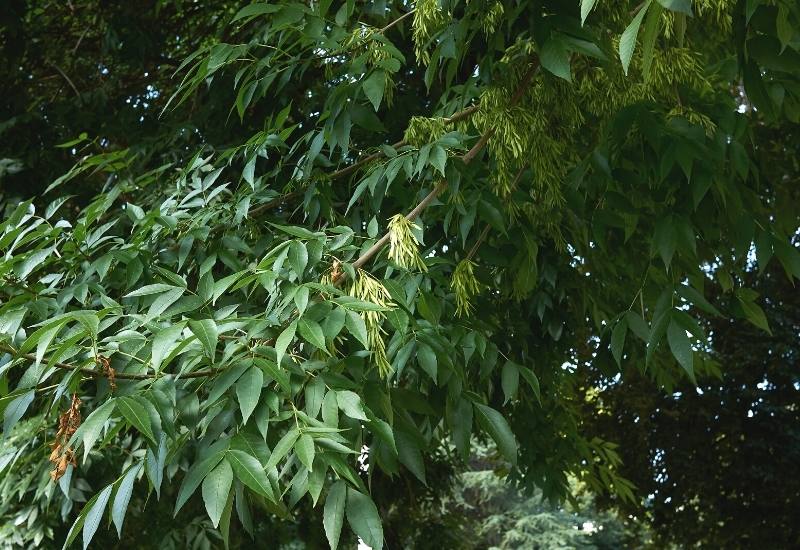
Green ash is one of the most widespread varieties, thanks to its dense crown with lush and emerald green foliage.
There are 7 fairly broad and well shaped leaflets on each leaf, but they turn golden yellow in fall, giving you a very bright spectacle indeed!
The tree is pyramidal in shape when young; when it matures, it takes on a round habit. The trunk is upright with gray brown bark, which has decorative diamond shaped cracks in it.
The “keys” or samaras are particularly long, about 2 inches (5.0 cm) and they stay on into the winter season.
Green ash is a popular garden tree, grown mainly as a specimen plant in fairly large private and public green spaces.
It is very cold hardy, so you can have in in most of Canada and the Northern US states too, as well as Northern Europe.
2: White Ash (Fraxinus americana)
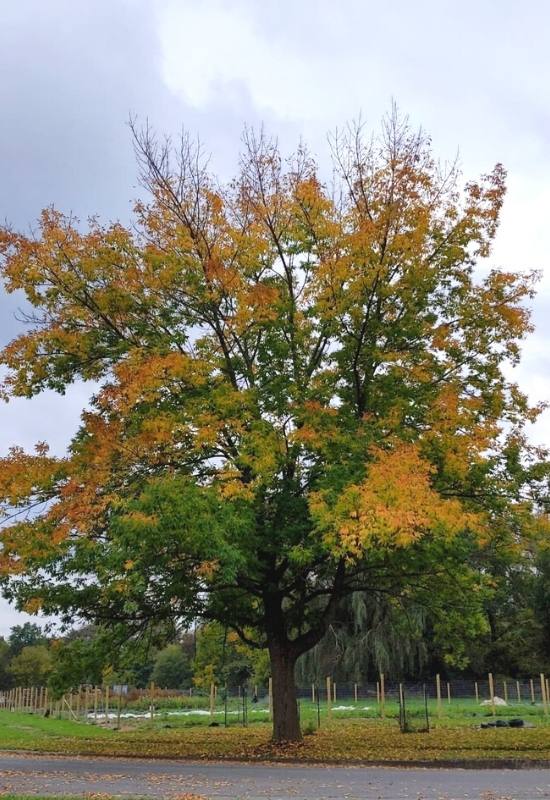
Native to eastern and central North America White ash or or American ash is actually a colorful deciduous species of ash tree, so the name is misleading. The foliage is very dense and dark green; it is pinnate like with all ash trees, but with a varying number of leaflets: between 5 and 9.
They will turn yellow, orange and copper in fall, giving you a final blush before they fall. The bark is silver brown with vertical and diamond patterns on the upright trunk.
The blooms come in spring and they are original; they are not white but purple.
It is also one of the largest species of ash trees. It will have a vertical and pyramidal habit when young, but as it comes into maturity, it will produce a very round and regular crown.
White ash is grow for its very hard wood, and in fact, baseball bats are made of it! But it will suit an informal and spacious garden or park, where you can grow it as a specimen plant.
3: Blue Ash (Fraxinus quadrangulata)
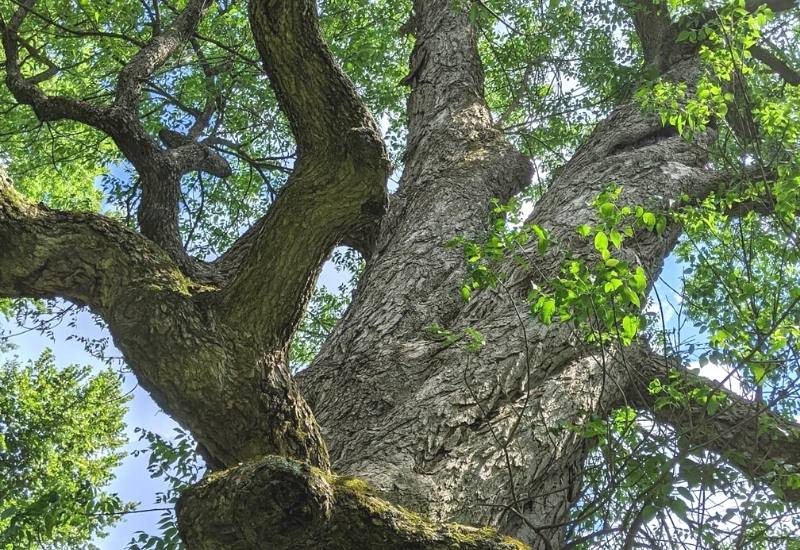
You will recognize blue ash from the bark; if you peel it, it turns blue in fact, and it is sued to make dyes.
But peeling off bark with no real reason is not ideal and ethical, so let’s look at other features… The leaves have 11 leaflets; they will start off bright green and turn dull yellow and even gray in fall.
The trunk is very upright and straight, with smooth gray bark when young, but it becomes irregularly cracked when it ages.
The crown of this species is oval when young and round when it becomes an adult. You will notice that the e branches, where the leaves are attached, are made up of segments, which makes it quite distinctive.
Blue ash is a good specimen plant to grow in drier areas compared with other plants of this species; it will need some space as well.
4: Black Ash (Fraxinus nigra)

Black ash is very famous medium sized deciduous species or ash tree from North America, with great gardening value and also used for its wood, but now it is critically endangered, so protected. You will find it in swamps in the North East of Canada and the USA. It can reach 66 feet in height (20 meters) or rarely a bit more.
It has light green foliage with 11 leaflets on each leaf. The distinctive trait of this variety is that its bark is dark gray, almost black. It will be smooth when it’s young, and develop vertical cracks as it ages.
If you choose black ash tree, you will help with its preservation, and it is an ideal choice if you want a deciduous clump of temperate looking trees on wetland, so, a type of soil where it’s hard to grow a garden… Quite handy!
5: European Ash (Fraxinus excelsior)
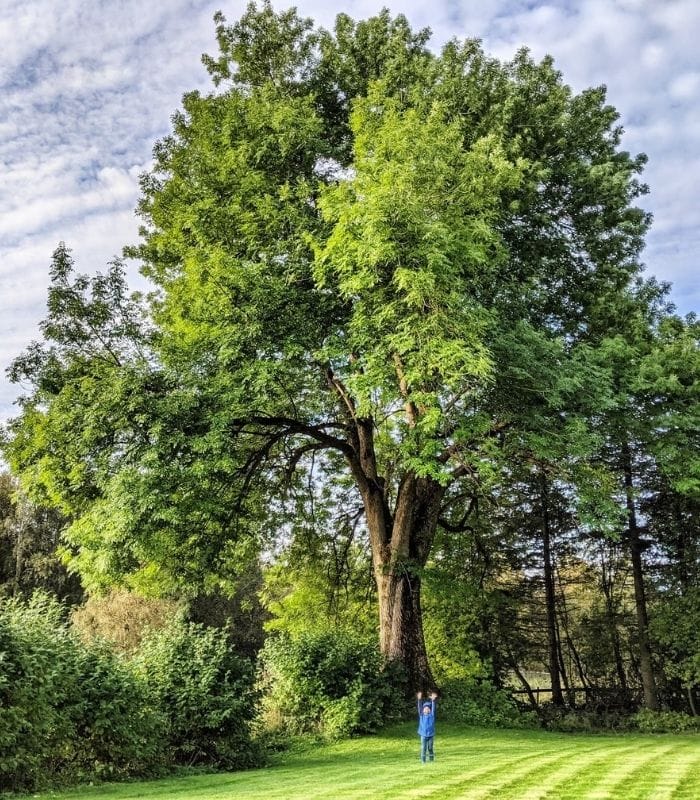
Native to Europe and western Asia, European ash, sometimes called European black ash, is one of the largest ash tree varieties. Characterized by a round, spherical crown with thick foliage, a very upright and straight trunk and dark green leaves, European ash has a very harmonic and balanced look.
The silver brown bark is rigged into diamonds, a lovely pattern. Each leaf of European ash can have between 7 and 11 leaflets, and the flowers of this species are purple and not white.
European ash is mainly grown for wood; the straight trunk, large dimension and good quality of the wood are ideal for this business.
But its harmonic and dense crown, with upright trunk make it also ideal in large gardens and parks as a shade and specimen plant or to create small woods.
6: Swamp Ash (Fraxinus caroliana)
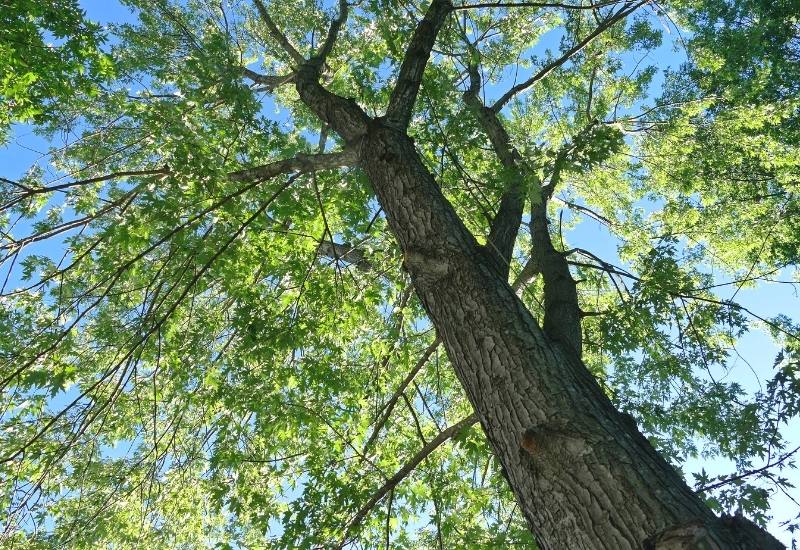
Swamp ash is identifiable by its glossy dark emerald leaves; they have between 5 and 7 leaflets and they are smooth, with slightly serrated margins.
They look like they belong to a house plant. It hails from North Carolina, where it grows in well in humid and even wet soil.
The samaras are green and broad, and they take on a wine purple color when they mature.
The upright trunk has gray cracked bark and the crown is oval. It is not an easy variety to find. It can even grow inside ponds and in wetlands.
Swamp ash is ideal for wet soils, including river sides, pond sides, or actual bogland. You can grow it in clumps or as a specimen plant.
7: Gregg’s Ash (Fraxinus greggii)
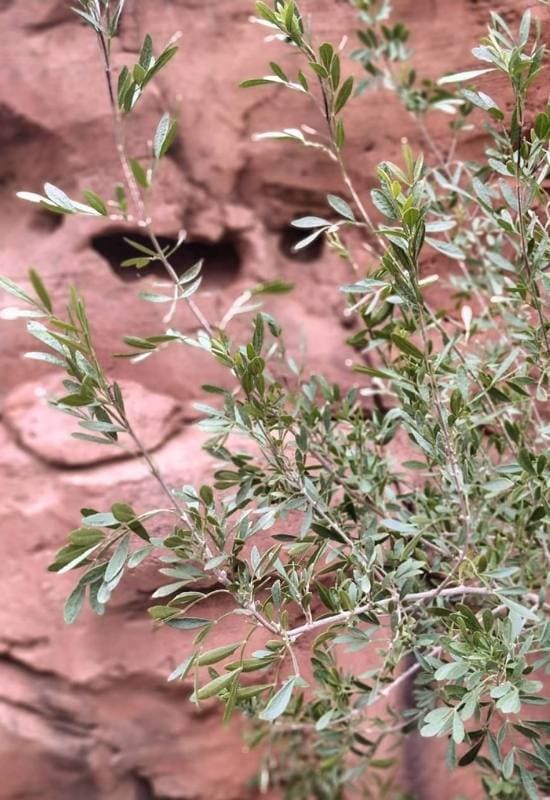
Gregg’s ash is the easiest to identify, because it’s very different from the others. It is actually an evergreen shrub with a round habit, though you can train it into a tree.
The branches tend to point upwards, and the leaves are leathery small, about 2 inches long. This gives it a very thin and refined texture, with lovely light games on the light to mid green foliage.
The bark is smooth and gray in color, and the keys come in small clusters that turn light brown when they mature.
It requires very low maintenance as a shrub, though it will need a bit more tending as a tree.
This small ash is good for clumps, hedges and foundation planting, as a tree, it can be a lovely and decorative specimen plant.
8: Manna Ash (Fraxinus ornus)
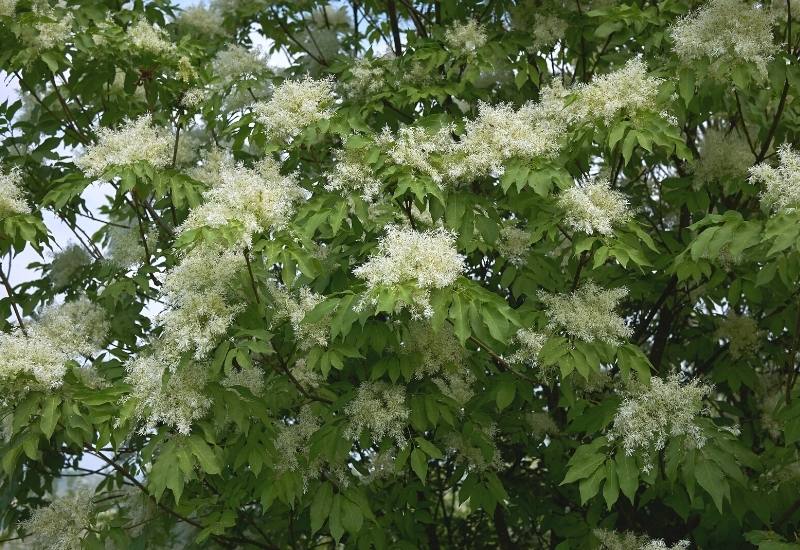
Yes, this is the manna tree! Also called flowering ash, Fraxinus ornus is a medium-sized deciduous tree famous for its large, dense and fragrant white blooms…
They are edible (manna) and they come at the tips of branches in profusion in spring. They are followed by the winged seeds that stay on in fall and even winter!
The foliage or South European flowering ash is very elegant, arching and with 5 to 9 leaflets, bright green in color, but it becomes spectacular in fall, when it becomes yellow, burgundy and even purple red! The crown is round to oval. The trunk is upright and with gray to brown smooth bark.
Manna ash is a wonderful tree for gardening; it is a plant for four seasons. Unlike other trees in this species, it likes drier and warmer conditions, and you can use it as a specimen plant or for a small coppice.
9: California Ash (Fraxinus dipetala)
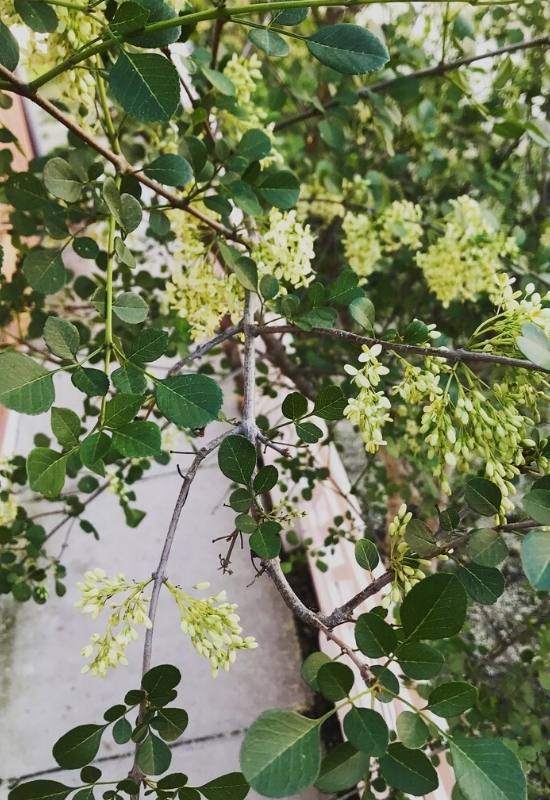
California ash is an original species of Fraxinus, quite easy to recognize… California Ash or Two-petal Ash has between 3 and 9 leaflets on each leaf, and they are lightly serrated and with unusually rounded tips.
Mid green in color, it forms a thick canopy on the fairly small tree. The flowers are fragrant, white and they also only have two petals each, this too sets it apart.
They come in smaller clusters than other ash tree varieties. The keys or samaras are pea green and glossy when young, and they turn brown to purple when ripe.
Finally, the crown can be pyramidal or round and it is often less dense than other species of ash trees.
Native to Arizona, California, southern Nevada, and Utah, California ash is good for dry regions, and the name suggests it. As a tree, you can have it in clumps with other species; on its own, it gives you a light and airy effect.
10: Desert Ash (Fraxinus angustifolia)

Desert ash looks different from a distance; you won’t see the thick canopy of foliage in the crown, and in fact it’s also called “narrowleaf”.
Fraxinus angustifolia or Desert ash is drought tolerant and spreading deciduous species of ash tree, with an oval and upright habit and elegant branches. The bark is smooth when it is young and then it cracks into squares…
The leaves are very distinctive too, because they have thin leaflets on them, and they are always 13. The cultivar ‘Raywood’ is loved for the purple coloring of the leaves in fall.
It is very resistant to emerald ash borers, so it’s ideal if you have this problem in your region. As a garden tree, a large informal space and specimen planting would be ideal.
11: Pumpkin Ash (Fraxinus profunda)
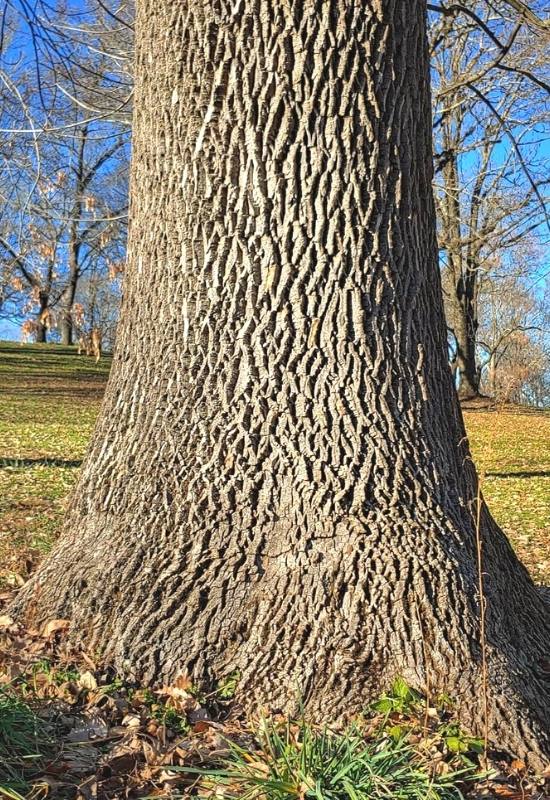
Pumpkin ash is a large species, maybe even the largest, as it can exceptionally reach 125 feet tall (38 meters). It has an upright habit with an oval crown, which is open, and not as dense as other ash trees.
It has yellowish green glossy leaves with a hairy underside, each with 7 to 9 elliptical leaflets. They are long, between 9 and 18 inches (27 to 54 cm!) and they turn bronze to purple red in fall.
The samaras are big too; they reach 3 inches in length (7.5 cm). On the other hand, the flowers are inconspicuous, small and greenish in color.
Pumpkin ash is very ornamental as a large tree with showy foliage, of course, it needs plenty of space and it is suitable for specimen planting. It adapts well to wet areas and rain gardens.
12: Oregon Ash (Fraxinus latifolia)
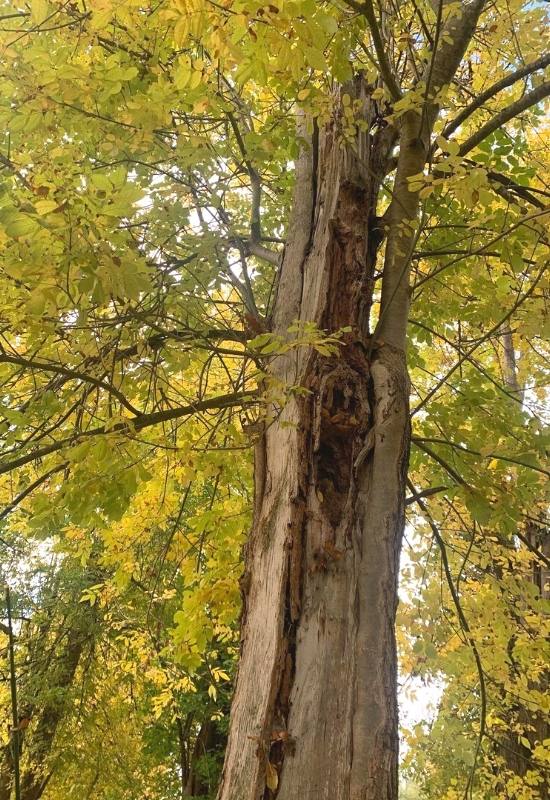
Oregon ash is one of the most ornamental trees in Fraxinus genus. It has an upright branch with a large thick but flattened crown.
The branches wind and arch beautifully, giving it a majestic look. The leaves are light green, with 5 to 9 leaflets each, but they turn bright yellow late in fall.
The bark is gray when young and brown gray as it ages, and it also starts to crack later in the years.
The blooms are inconspicuous but the samaras that follow are quite large, 2 inches long (5.0 cm). It is also a long lived tree: up to 250 years!
Ideal as specimen plant with a strong and elegant presence in natural looking gardens, Oregon ash may even suit oriental designs, thanks to its habit. It is ideal for wetlands and wet gardens.
Ash Trees – Really Stunning Plants
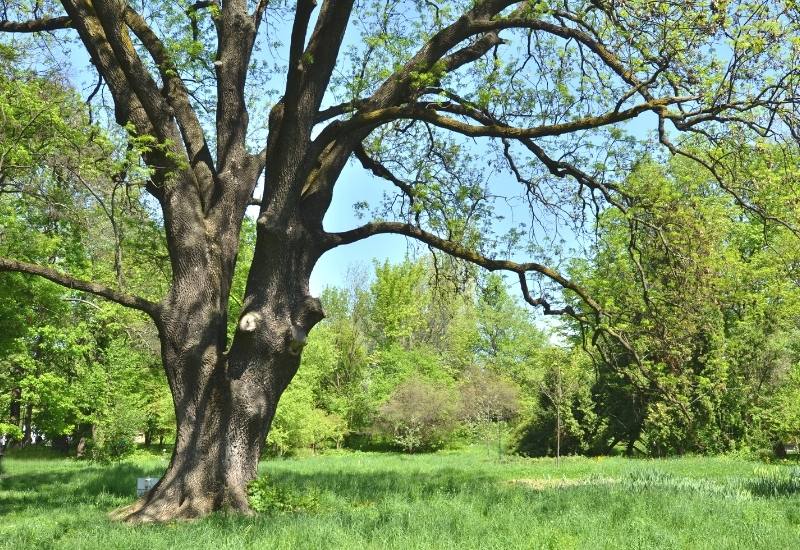
Ash trees have it all; interesting foliage and “keys”, large blooms, upright trunks and dense crowns..
They are also good for extreme soil conditions, some for drought and some for wet land!
They have a lot of personality and they will look good in most gardens, especially in a sunny spot at the back of a lawn, and if this is what you had in mind, go ahead, now you know the best varieties!
Header Image Cathy McCray /flickr/CC BY-NC-ND 2.0

Written By
Andrew Zubek
From Northern Ohio, he received a Bachelor’s degree in Botany and Marketing from Miami University of Ohio. Whether it is in the midwest, along the west coast, in the valleys, in the desert, or in the city, he has unique experience growing in many different microclimates having lived in multiple different climate zones. Helping to establish a landscape company focused on edible landscapes, he leads their nursery cultivating over 100 edible varieties of plants. Receiving his Certified Arborist certificate from the International Society of Arboriculture in 2019, he has spent the past few years focused on trees, especially food producing varieties. He hopes to open the world’s eyes to the importance of respecting our environment and giving back as much as it has given to us.
